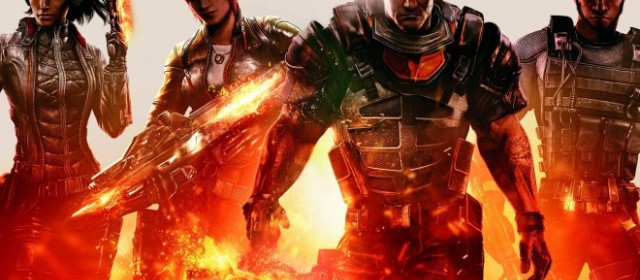You have to wonder what the going rate for henchmen is these days. If you calculate the time and financial outlay required to train a faceless goon to be a part of your private army, to outfit him, to pay for medical benefits (you don’t want a hired gun who has to wear glasses, do you? You’d pay for the laser surgery), insurance (including gunshot wounds, acid and fire damage, post traumatic stress) and a decent salary, likely paid up front and in cash to ensure loyalty and remove the paper trail, a single, solitary henchman must set your average maniacal supervillain back a few thousand pounds, dollars or Euros per month – especially when it’s revealed that the insurance policy doesn’t cover “eaten by shark”, “blasted into alternate dimension” or “vapourised by alien death-ray”, and grieving families have to be compensated.
So it really makes you wonder how any dastardly, evil-doing terrorist leader can afford the overheads when their private military company is being mass-murdered in their hundreds by a group of plucky mercenaries like Overstrike 9. I mean, we haven’t even factored in the several dozen robots, gunships and top secret research facilities destroyed as collateral damage along the way. Someone must be paying the bill, right?
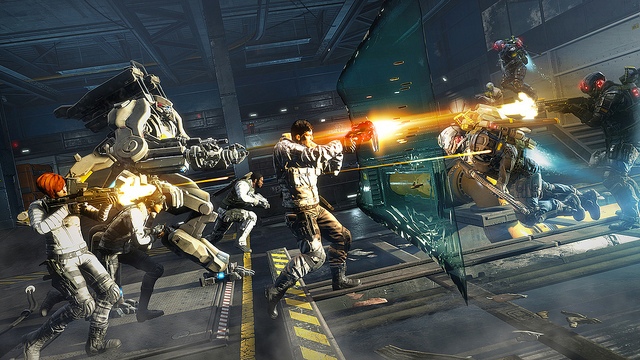
Insomniac Games neatly side-step such questions in their new sci-fi shooter, Fuse, by not giving a single ounce of damn. It is not for them to worry about the background logistics of operating a global terrorist network, nor to concern themselves with the realistic downsides and moral dilemmas of using human soldiers as expendable fighting machines. No, Insomniac Games seem to have followed a very simple ethos during the development of Fuse: if it can blow up, then it should blow up. Everything else is periphery.
The storyline does a fairly decent job of linking the explosions and posturings with a narrative thread made up of leftover bits and pieces of Michael Bay and Paul WS Anderson movies, panel-beaten into coherence around the theft and reacquisition of the titular Fuse. An alien MacGuffin able to do whatever the storyline requires it to do at any given moment, Fuse is an energy source declared top priority by Overstrike 9’s shady employer. Sent in to a remote science facility to retrieve the substance, our four sweary heroes find themselves dropped into a battle for the fate of the world when the substance is instead stolen by Raven, a rogue private military company (is there any other kind?) seemingly comprised of soldiers trained to walk menacingly into the path of bullets and pose aggressively near highly-explosive material.
The four main characters – grizzled ex-Raven employee Dalton Brooks, wise-cracking racial stereotype Jacob Kimble, token English science chick Naya Devereaux, and rebellious hacker Izzy Sinclair – actually do a decent job of remaining likeable throughout the story, if only because they’re so incredibly clichéd that they feel instantly familiar. The narrative occasionally attempts to dig deep and find a third dimension by throwing sudden and unflattering light on their pasts (none of which is filled with particularly noble deeds), but on the whole it really is little more than a framework for lots of explosions, air-punching, unsubtle flirting and, well, bombast.

The thing is, though, is that it kind of works. It all depends on how you look at Fuse. On the one hand it’s a game hitting the market at the tail end of the console generation when, historically, a handful of swansong releases set the world on fire and ensure that no one forgets the current-gen. Fuse is not one of those releases, and when viewed beside the likes of The Last of Us and even Remember Me, you’ll barely see the content for the cracks. Fuse is not a game that can stand beside the best, or even the second best. It’s a clumsy, stuttery, over-confident peacock flashing its colours as it stumbles into walls and trips over its own swaggering feet.
And yet, on the other hand, it’s quite often bloody good fun. It doesn’t make any apologies for what it is, and while it originally seemed an odd choice for a developer like Insomniac, it actually makes perfect sense. Thematically, Fuse (sometimes uncomfortably) occupies a shaky, arguably undesirable middle ground directly between Ratchet & Clank and Resistance. It’s shamelessly big and wilfully dumb, intentionally fast-paced and oddly endearing, delivering an experience more mature and focused than Ratchet & Clank has been for the last few releases, but less straight-faced and well-designed than the Resistance series characteristically is.
The Fuse-powered weaponry acquired in the opening mission certainly has hints of R&C’s off-the-wall arsenal. Dalton misappropriates a “Mag Shield”, a handy device that can generate a piece of temporary, moveable cover, and absorb impact to be released in a single devastating blast; Naya’s Warp Cannon generates focused singularities; Kimble’s arc-shot sets bad guys on fire; and Izzy’s Shattergun encases the enemy in melanite (the physical residue of Fuse), leaving them suspended and ready to be shattered at your convenience. Each gun is cool in itself, and you can switch between them (and the operatives who wield them) by holding down the back button and pressing the corresponding face button. The ability is called “leaping” and allows you to zip around the battlefield from agent to agent, utilising all the weapons and talents available to them.
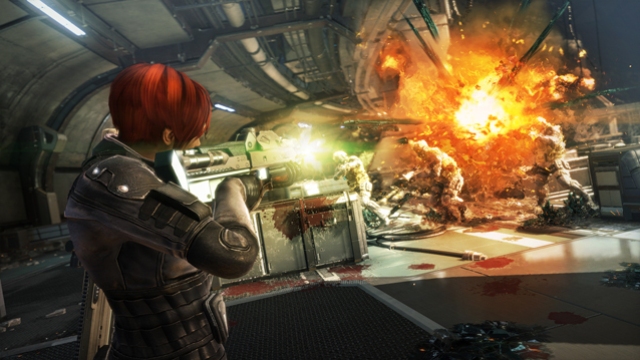
The cover-system apes Mass Effect 3 (as does the level design), allowing you to slam yourself against the nearest waist-high barrier or doorway by hitting Circle (or B on the 360). Once there, the left trigger leans out or over, and L2 will hurl a grenade (which can also be upgraded to do Fuse damage later on). The shooting itself is pretty solid, and the larger firefights are often hugely enjoyable as you combine Xenotech with more grounded weapons like sniper rifles and pump-action shotguns. Sadly, the meagre selection of weapon types are all introduced in the first level, and there’s nothing to gradually unlock as you play.
Despite flashes of colour as your points per kill are displayed in big glowing letters, and some decent character animation, the gunfights are plagued by poor, stupid AI. Enemies will either stand still while you shoot them, or hurl themselves to the ground for no reason. Sometimes they’ll simply run at you and wait for you to hit Triangle to kung-fu kick them into next week, while at other times they’ll bob up and down out of cover like you’re playing Whack-a-Mole. Throw a grenade at them and they’ll wander casually away from it, or else they’ll squat over it like they’re incubating an egg and the baby is a controlled thermonuclear explosion.
Unfortunately, your squadmates aren’t much better. Go down and they’ll revive you immediately, provided they don’t have to walk more than three yards or navigate anything more complicated than a counter-top, but they have the self-preservation skills of a blind lemming, repeatedly standing in the line of fire or sprinting ahead while you’re trying to be stealthy. During one particular Arkham Asylum-aping boss fight, my team of highly-trained killing machines kept standing in the path of a laser beam and letting it cook them.
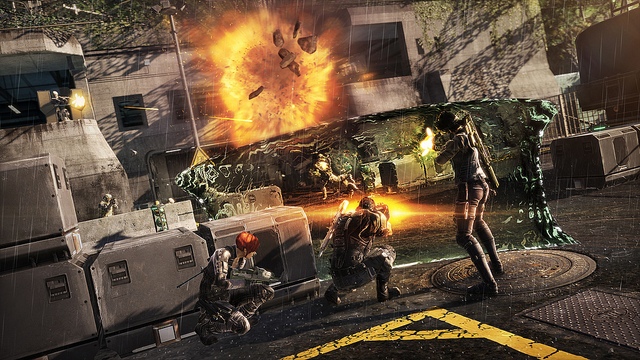
Fuse’s saving grace is the drop-in, drop-out co-op. Playing the campaign with three other people on a higher difficulty makes everything better. The dodgy enemy AI makes less difference because they’re harder to kill and you’re too busy having fun to worry about it all, and you’ll always have someone to revive you and efficiently watch your back.
The standalone multiplayer, nicknamed “Echelon”, is also great. Wave-based combat with an objective-based mission structure, Echelon throws a metric butt-tonne of enemies at you while giving you specific order such as defending a Fuse core or killing a high value target. It’s another element that borrows heavily from Mass Effect 3, but when played with other people, particularly friends, it’s a great mode.
The characters lend themselves better to the group dynamic when you can use their individual strengths. For instance, when tackling a Leadfire mech (a dude in a mechanised suit with a flamethrower), you can use Izzy to cover it in melanite to slow it down while Dalton drops a Fuse shield to use as cover; meanwhile, Kimble can head around behind and target its fuel tank with the Arc-Shot and Naya can deal massive damage by opening a singularity right on its face. Izzy and Dalton are great support characters, with Dalton able to deploy cover before reviving a fallen squadmate and Izzy able to hurl a Med Beacon that will fix up anyone who’s injured.

The whole point of grinding the multiplayer is to collect Fuse Credits, a currency that inexplicably resembles gold bullion and can be used to unlock Team Perks. While individual skills – improved damage, secondary attacks and increased health, for example – are unlocked and upgraded with standard XP, Team Perks can only be bought with Fuse Credits and provide bonuses to the entire team such as faster health regeneration and quicker levelling. You can only earn Fuse Credits in single player by finding them (they’re the main collectible besides canisters of XP and the usual intel-spouting data-pads), and so the most effective way to earn them is to kick ass in multiplayer.
While Fuse suffers from a few inconsistent textures, the aesthetics are pretty good. The characters are well-drawn, the environments are detailed and the art style has a cartoonish quality that belies Insomniac’s platforming heritage and evokes memories of forgotten last-gen squad shooter Brute Force. The voice acting is also pretty good – which is to be expected when the scripts requires all characters to communicate exclusively in wise-ass remarks, thinly-veiled innuendo and swearwords.
Fuse is not a victim of its own ambition, because it appears to have none. Rather, Fuse is the victim of Fuse. It borrows so many elements from so many other games that it doesn’t have much of an identity of its own and, while it will provide a weekend or two of fun thanks to the decent-sized campaign and a multiplayer mode with the potential to be mildly compelling, the pay-off just isn’t there for the long term. The campaign has too many drawn-out, dull moments that simply don’t invite replays, while the multiplayer provides missions analogous to Mass Effect 3’s but lacks the addictiveness of its unlockables.
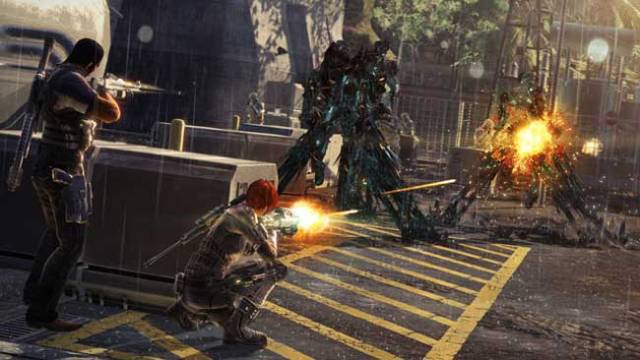
VERDICT: Fuse is good fun sadly marred by moments of stupidity (breaching a wall with explosives strong enough to knock down 10-inches of brick and steel whilst crouching right beside it is just asking for trouble), and yet, somehow, from amidst the generic storyline, clichéd characters and derivative mechanics, a good game occasionally rises. A solid shooter that suffers from inconsistent AI in the single player shines brightest when played with friends, and likeable characters and an often amusing script stop the storyline from ever becoming abysmal. By all means pick Fuse up from a bargain bin or give it a rental, but fans looking for an accomplished shooter with more class than bombast would be better served elsewhere.

DECENT. A 6/10 indicates that, while this game could be much better, it still has a fair amount to offer the player. It might be an interesting title sabotaged by its own ambition, or a game denied greater praise by some questionable design choices. Don’t avoid it outright, but approach it with caution.


